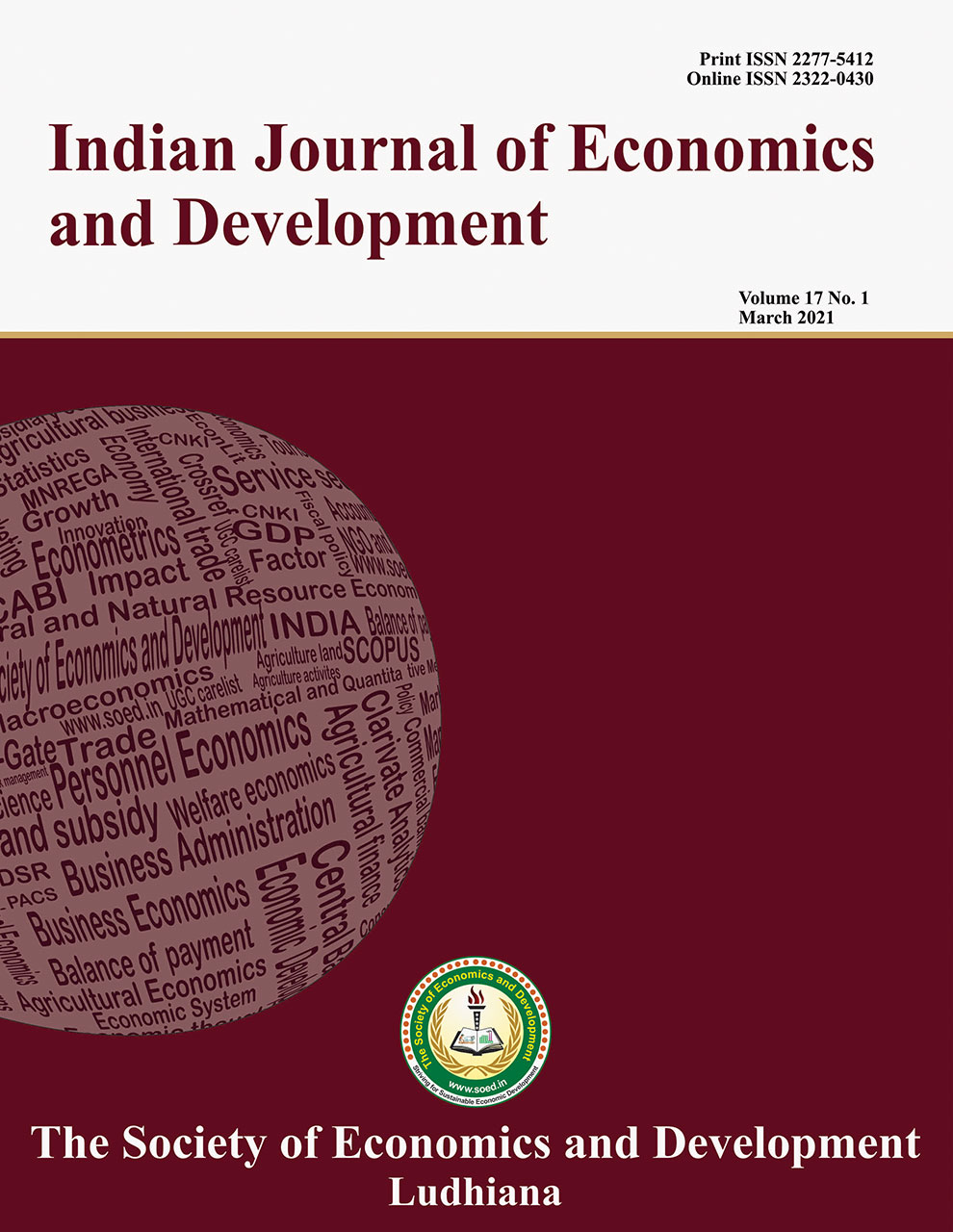Does Employment Status Determine Household Consumption Pattern in India: An Analysis through Dependency Approach

Price: ₹ 500
Author: Dhananjay Kumar and Nitin Bisht 1* 2
Author Address: 1 2 Research Scholar, School of Economics, University of Hyderabad, Hyderabad Telangana, India-500046 and Research Scholar, Department of Humanities and Social Sciences, Indian Institute of Technology Roorkee Roorkee-247 667 (Uttarakhand)
Keywords: Dependency ratios, employment status, household consumption, quantile regression.
JEL Codes: C21, E20, J10, J21.
Abstract
Demographic structure determines the employment status in economic activity and household well-being. Well-being is positively associated with household consumption expenditure and further relates to economic growth at the macro level. The demographic dependency ratio in this context is a widely used indicator to understand the impact of changing demographic structure on economic growth. This ratio estimates the possible potential of the productive workforce based on age criteria but ignores the actual engagement of the productive workforce. Therefore, the objective of the study was to compute the household economic dependency ratios and explore their trends and pattern for several quantiles of household consumption expenditure. For this purpose, this study utilized the NSSO (EUS), and Periodic Labor force survey data for the overall analysis and applied the OLS and quantile regression to perceive the relevance of employment status on the household consumption expenditure while controlling household characteristics. The findings implicate a positive relationship between employment status and household expenditure. The results also revealed an existing asymmetric relationship for dependency ratio and household expenditure ranging from lowest to highest dependency ratios. The individuals engaged in the human capital and domestic duties contribute most to the dependency ratios for a household. Moreover, the primary sector emerged as the major source of employment for the most vulnerable section, which represents the least household consumption expenditure.
Description
Indian Journal of Economics and Development
Volume 16 No. 4, 2020, 547-558
DOI: https://doi.org/10.35716/IJED/20154
Indexed in Clarivate Analytics (ESCI) of WoS
Scopus: Title Accepted
NAAS Score: 4.82



